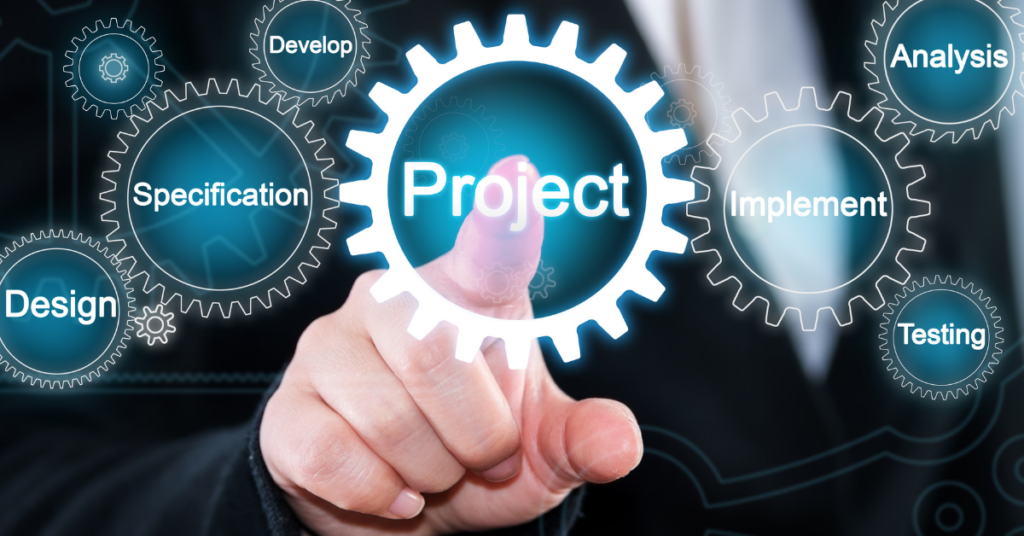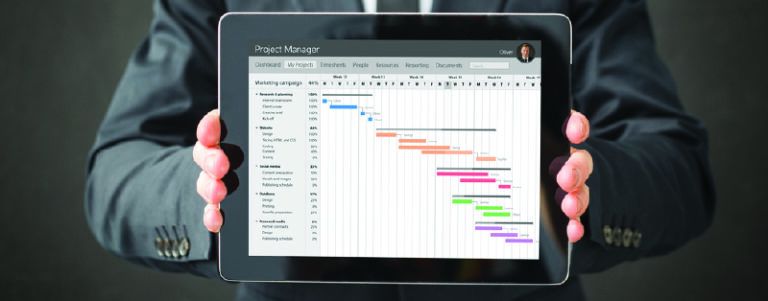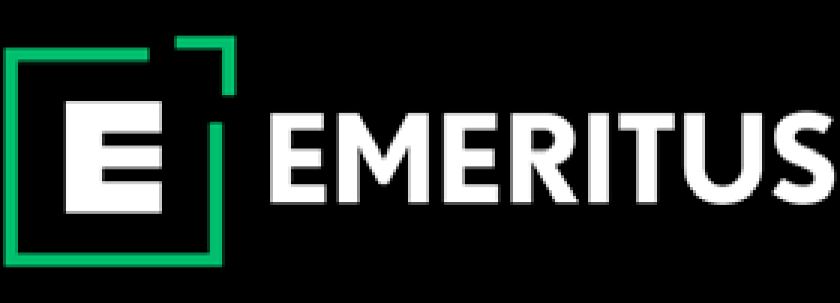Understanding What is JIRA Software and Its Role in Project Management

Introduced in 2002, JIRA software initially emerged as a tool dedicated to issue tracking and project management, catering to the collaborative needs of teams. What is Jira software? It is the number #1 agile project management tool used by businesses to create great software. Over time, 65,000+ companies worldwide have embraced JIRA, drawn to its adaptable nature of accommodating diverse project types. Beyond its core functionalities, JIRA’s appeal lies in its extensive compatibility with numerous apps and integrations. This further enhances its utility for businesses across the globe.
Agile in nature, JIRA facilitates tasks from bug tracking to agile software development, evolving beyond a mere bug tracker. With integrations and real-time insights, it empowers product managers to streamline development processes and prioritize them effectively.
In this blog you’ll learn,
- What Is JIRA Software?
- Key JIRA Concepts
- Different Features of JIRA
- Which Teams Can Benefit From JIRA? What Is the Use of JIRA?
- How JIRA Works in Project Management? How to Use the JIRA tool?
- Excel in Comprehensive Project Management with Courses from Emeritus

What Is JIRA Software?
The term “JIRA” originates from the Japanese word ‘Gojira,’ which means Godzilla.
JIRA Software is a robust project management and issue-tracking tool. Developed by Atlassian, it streamlines the software development process by enabling teams to plan, track, and manage projects efficiently. With features like customizable workflows, agile boards, and real-time collaboration, JIRA software empowers experienced professionals to enhance productivity, track progress, and ensure seamless communication, making it an invaluable asset for complex software development projects.
Also Read: Know the Fundamentals of Successful Project Management
Key JIRA Concepts
Now that you know what is JIRA software, let’s dive into its key concepts for effective use.
1. Issue
In JIRA, an issue represents a task, bug, story, or any unit of work that needs to be tracked. Issues can be customized to match the specific needs of your project.
2. Project
A project in JIRA is a collection of issues. It provides a way to organize and categorize work within a team or across multiple teams. Each project has its own set of configurations, including workflows, screens, and fields.
3. Workflow
A workflow is a set of statuses and transitions that an issue moves through during its lifecycle. It defines the process that an issue follows from creation to completion. JIRA comes with default workflows, but you can also create custom workflows to match your team’s processes.
4. Status
Status represents the position of an issue in its workflow. Examples of statuses include “Open,” “In Progress,” “Resolved,” and “Closed.” The workflow defines the available statuses and the transitions between them.
5. Transition
A transition is an action that changes the status of an issue. Transitions move an issue from one status to another. For example, moving an issue from “Open” to “In Progress” is a transition.
6. Field
Fields are pieces of information associated with issues. JIRA has system-defined fields like Summary, Description, and Assignee, and you can also create custom fields to capture specific information relevant to your project.
7. Sprints
Sprints are time-boxed periods during which specific work is completed. They are part of Agile methodologies like Scrum.
8. Board
A board is a visual representation of the workflow for a set of issues. There are different types of boards in JIRA, such as Scrum boards and Kanban boards. They cater to specific project management methodologies.
9. Dashboard
Dashboards in JIRA provide a customizable and centralized view of project information, reports, and metrics. You can create dashboards to monitor progress, track key performance indicators, and display relevant data.
10. User Story
In Agile development, a user story is a short, simple description of a feature told from the end user’s perspective. It helps to define the desired functionality in a way that is understandable by both technical and non-technical team members.
Understanding these key concepts is essential for effectively using JIRA to manage projects and track issues throughout their lifecycle.

How to Use JIRA for Beginners
For beginners, start by creating a JIRA account and project. Learn to navigate the dashboard, create issues, and manage tasks. Understand basic JIRA terminologies like Issues, Stories, and Fields. Utilize filters and boards for efficient task tracking. Leverage JIRA’s reporting features to monitor project progress. You can also explore JIRA tutorials or take up comprehensive certification courses for in-depth guidance.
Different Features of JIRA
Explore JIRA’s diverse set of features designed to streamline project management, enhance collaboration, and drive efficient workflows.
1. Agile Responsiveness
JIRA excels in Agile project management, allowing teams to respond promptly to unexpected changes. Its agile boards facilitate efficient task management and adaptability to evolving project requirements.
2. Customizable Workflow
JIRA’s customizable workflows empower teams to tailor processes according to their unique needs. This flexibility enhances collaboration and ensures alignment with specific project requirements.
3. Efficient Collaboration
The platform facilitates collaboration among team members, improving communication and coordination. It enhances transparency by providing a centralized space for tasks, issues, and project updates.
4. Visual Boards and Templates
JIRA offers visual boards and a library of ready-made templates, streamlining project management. Teams benefit from enhanced visualization, making it easier to manage projects of varying complexities.
5. Task Assignment and Progress Tracking
JIRA simplifies task assignment and progress tracking, ensuring teams stay on top of deadlines. It provides a comprehensive overview of project status, helping teams identify and address potential bottlenecks.
6. Reports and Insights
The platform provides robust reporting and insights features, offering visibility into project progress, performance, and potential bottlenecks.
7. Project Planning
JIRA facilitates project planning, assisting teams in organizing tasks, defining milestones, and creating project timelines.
8. Integration Capabilities
With a rich ecosystem of 3000+ apps and robust APIs, JIRA supports seamless integration with various tools and enhances its functionality.
Which Teams Can Benefit From JIRA? What is the Use of JIRA?
JIRA is a versatile tool that caters to the diverse needs of various teams across different industries. Let’s explore what is the use of JIRA.
1. Software Development Teams
JIRA is widely recognized for its effectiveness in software development. It aids teams in adhering to Agile methodologies, facilitating collaboration, and ensuring efficient project management.
2. IT Operations Teams
IT teams benefit from JIRA’s issue-tracking and project-management capabilities. Also, it helps streamline IT service management, track incidents, and manage tasks related to system maintenance and improvement.
3. Project Management Teams
JIRA is invaluable for project managers, providing a centralized platform to plan, track, and manage tasks. Its flexibility in workflow customization enables project managers to tailor processes to the specific needs of their projects.
4. Marketing Teams
Marketing teams leverage JIRA to coordinate campaigns, track deliverables, and manage creative tasks. It enhances collaboration among team members and provides visibility into project timelines.
5. Product Management Teams
JIRA aids product managers in prioritizing features, tracking development progress, and managing product backlogs. It aligns well with Agile frameworks, allowing for iterative and collaborative product development.
6. Manufacturing and Operations Teams
For manufacturing and operations, JIRA can be adapted to track production processes, manage supply chain workflows, and ensure quality control. It provides a transparent view of tasks, helping teams meet production deadlines and maintain product standards.
JIRA’s flexibility and customizable features make it a valuable asset for teams in diverse fields, fostering collaboration and improving efficiency. They provide a comprehensive solution for project management and issue tracking.
Also Read: AI in Project Management: 5 Important Trends to Watch Out for in 2024
How JIRA Works in Project Management? How to Use JIRA tool?
Project managers leverage JIRA in diverse ways to streamline processes, ensuring efficiency and success. Here’s a breakdown of the same.
1. Project Creation
Begin by creating a project in JIRA and specifying its key details such as name, description, and project lead. This initial step lays the foundation for the entire project management process.
2. Issue Creation
Break down the project into manageable tasks, known as issues. Issues can represent user stories, bugs, tasks, or any work item, allowing for granular control and visibility into project components.
3. Workflow Design
Define a workflow to represent the lifecycle of an issue, outlining the stages it goes through from creation to completion. This ensures a structured and standardized progression of tasks within the project.
4. Customization
Customize fields, screens, and notifications to align with your project’s specific requirements. This tailoring ensures that the tool accommodates the unique needs and processes of your project.
5. User Roles and Permissions
Assign roles and permissions to team members, controlling who can view, edit, or transition issues. This helps maintain security and ensures that team members have the appropriate level of access.
6. Backlog Management
Prioritize and manage the backlog by creating, updating, and estimating issues using features like epics and sprints. This strategic approach aids in efficient resource allocation and workload planning.
7. Sprint Planning
Utilize Agile features for sprint planning, tracking progress through boards, and managing work with Scrum or Kanban methodologies. Agile methodologies enhance adaptability and responsiveness to changing project requirements.
8. Collaboration and Communication
Foster collaboration through comments, attachments, and @mentions, ensuring effective communication within the team. This promotes transparency and knowledge sharing among team members.
9. Reporting and Dashboards
Leverage JIRA’s reporting tools to generate insightful reports and create dashboards that provide a visual representation of project progress. This data-driven approach enhances decision-making and project visibility.
10. Integration with Other Tools
Integrate JIRA with other development and collaboration tools to streamline workflows and ensure seamless communication across different platforms. Integration enhances overall efficiency and reduces the risk of information silos.
11. Continuous Improvement
Regularly review and refine processes based on JIRA-generated metrics, fostering a culture of continuous improvement. Analyzing metrics allows teams to identify areas for enhancement and optimize their project management practices.
This was just a glimpse of how to use Jira tool in project management. If you want to gain an in-depth understanding, you can undertake extensive certification courses in project management.
Excel in Project Management With Courses From Emeritus
Hone your project management expertise through Emeritus’s leading-edge courses, extending beyond learning how to use JIRA tool.
The curriculum of our project management courses is extensive. It delves into pivotal aspects such as the business environment for project management, project budgeting and finance, project definition and planning, meticulous project scheduling, and the intricacies of agile project and product management. Besides fundamental project management tools, the courses equip you with a thorough understanding of contemporary methodologies. It ends up providing a holistic education for aspiring project managers.
Write to us at content@emeritus.org








